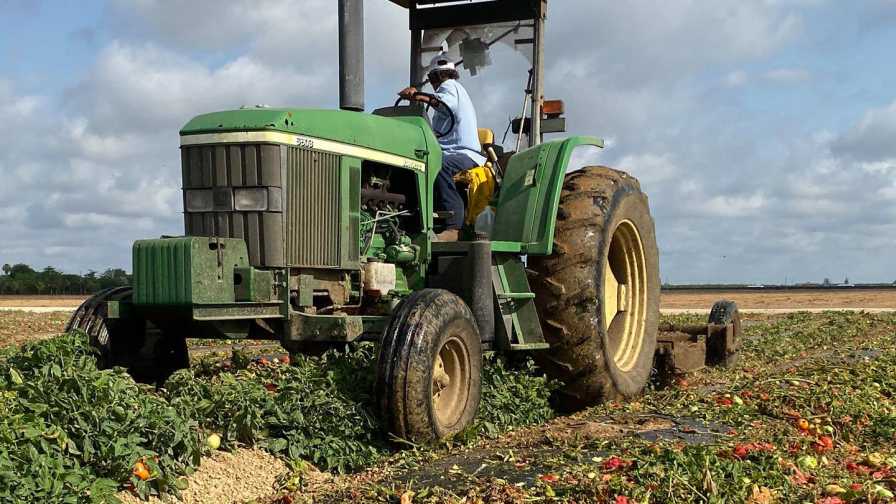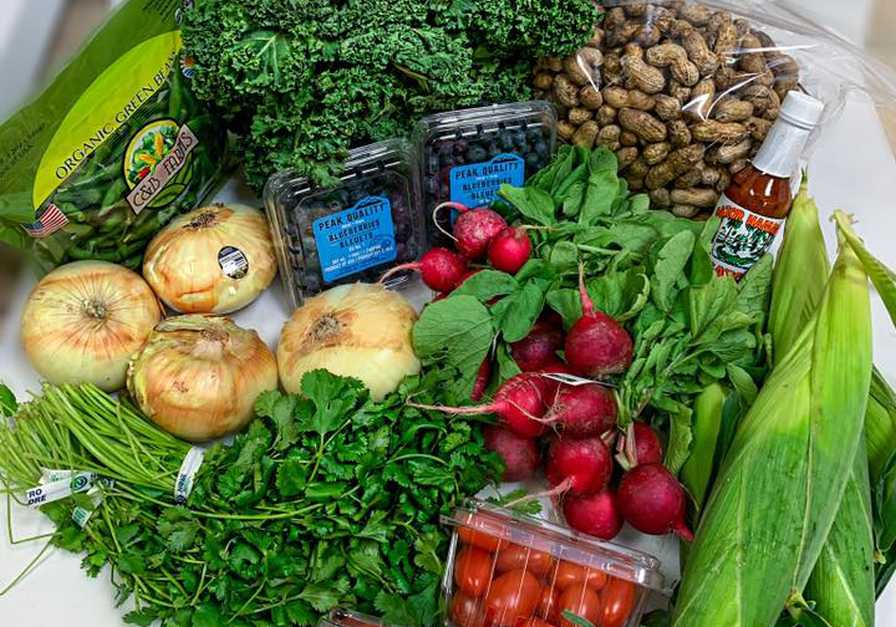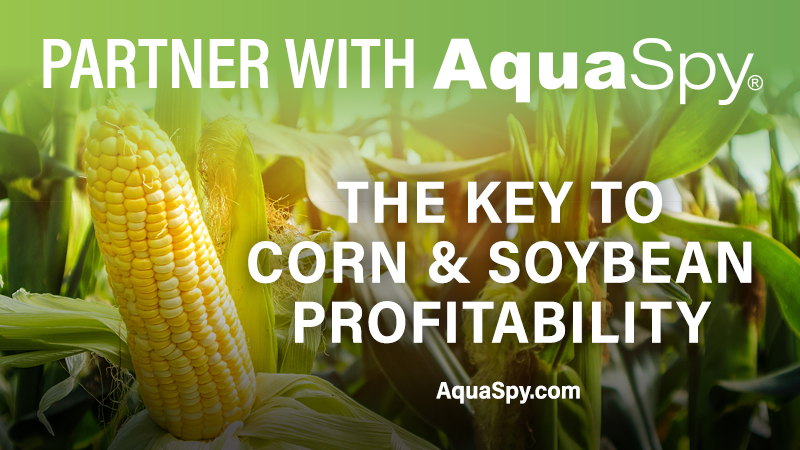Florida Growers Look to Move Beyond Coronavirus

Florida growers were forced to destroy some crops as the pandemic unfolded. The action, in part, helped to bring inventories back into alignment with supply and demand.
Photo courtesy of South Florida Vegetable Grower Facebook
The spring of 2020 will go down as a historic shock to the system. The coronavirus hit Florida’s specialty crop producers especially hard. As the months passed, growers are now looking beyond the pandemic and seeking ways to move forward. That’s not an easy task, but a necessary one.
As of early June, Florida was well on its way to opening back up with hopes that the virus would not spike again as a result of the large protest gatherings that were occurring in response to the George Floyd murder in Minneapolis.
The South Florida crop was wrapping up in early June, Gene McAvoy, UF/IFAS Vegetable Extension Agent Emeritus, was collecting information on how COVID-19 had been impacting farms throughout the virus outbreak and resulting shutdown. He noted that growers, particularly those reliant on foodservice to market their crops, saw a significant crash in the last week of March and for about three more weeks to follow. That is when Florida farms were the subject of national headlines as produce was dumped and crops were disced under in response to the market decline. But things began to take a more positive turn in late April.
“Prices and demand made a dramatic turnaround for the better around the end of April and into May,” McAvoy says. “We were seeing tomatoes and peppers bringing about $25 to $27 per box. Green beans and sweet corn also were getting good prices. So, the season finished strong in South Florida.”
McAvoy attributes the turnaround to a few things. One important factor was the reduction of inventory when growers dumped crops and disced up fields. It helped bring supply and demand back into alignment. Retailers like Publix and Winn Dixie sought to source more locally to help growers. Publix purchased more than 1 million pounds of fruits and vegetables during the outbreak to donate to those in need.
Some growers began selling directly to consumers online, by pickup, or delivery. Finally, millions of pounds of produce were moved by local food banks. All of these things reduced inventories of oversupplied produce and helped prices rebound.
“Many of our growers in South Florida had a really strong fall and winter market before COVID-19 became a factor,” McAvoy says. “Then after the market crash, we finished strong. I was predicting this was going to be one of those once in every five- or six-year home run seasons where everyone does well and pays off some debt and moves forward. That is not going to happen because of the virus; but because we started strong and finished strong, most growers are going to be OK, all things considered.
“That’s not to say that some farms weren’t hurt by this pandemic, and growers in South Florida are probably going to have a harder time than operations in Central Florida up into Georgia and North Carolina — who are taking advantage of these improved prices now. But, where things looked so bleak in March and early April, growers feel more and more confident about going into the fall season.”

Florida growers like C&B Farms began selling and donating produce boxes to help move product during the disruptions caused by the coronavirus. The farm not only included its own produce, but also items from other growers to add diversity to the box.
Photo courtesy of C&B Farms
Government Assistance
USDA is accepting applications for the Coronavirus Food Assistance Program (CFAP) through August 28. The program, Farmers.gov/CFAP, is dedicating $16 billion of financial assistance to growers who suffered a 5% or greater price decline or who had losses due to market supply chain disruptions from COVID-19.
To be eligible for payments, a person or legal entity must have an average adjusted gross income (AGI) of less than $900,000 for tax years 2016, 2017, and 2018. However, if 75% of their AGI comes from farming, ranching, or forestry, the limit of $900,000 does not apply.
While there was some angst regarding payment caps to individual growers, Lisa Lochridge, Director of public affairs for Florida Fruit & Vegetable Association (FFVA), notes its grower members are applying for assistance.
CFAP payments are subject to a per person and legal entity payment limitation of $250,000. This limitation applies to the total amount of CFAP payments made with respect to all eligible commodities.
Unlike other FSA programs, special payment limitation rules will be applied to corporations, limited liability companies, and limited partnerships (corporate entities). These corporate entities may receive up to $750,000 based upon the number of shareholders (not to exceed three shareholders) who contribute at least 400 hours of active person management or personal active labor.
“The reports we’re hearing from our membership are that they are getting prepared and successfully securing appointments with USDA’s Farm Service Agency (FSA),” Lochridge says. “The feedback on their interactions with their FSA offices has been positive. We’re optimistic that some of the first producers who got their appointments and submitted their applications will be receiving their payments in a timely manner.”
Lochridge added FFVA has been sending frequent guidance to growers on CFAP and is fielding calls and providing advice on the sign-up process. The association also is working with producers who grow crops that are not covered by CFAP. There is a mechanism to add eligible crops, if USDA receives adequate petitions.
McAvoy notes growers in his area have been setting up appointments with FSA to apply for assistance. “My advice to growers is to apply early, because we know that in that first wave of assistance, the government ran out of money before they were able to help everyone,” he says.
The Silver Lining
While the coronavirus has been a disaster on both a human and economic scale, McAvoy says one silver lining is that it has focused attention of the American public on the importance of food grown at home. “This whole thing has put energy behind the buy local, buy American grown movement,” he says. “Moving forward from this pandemic, we need to keep that message going.”
Moving Sales Online
One notable change some growers made when coronavirus dried up their normal marketing channels was the move to selling their crops online or via curbside pickup. Lauri Baker, an Associate Professor of Agricultural Communications with UF/IFAS, recently hosted a Wedgeworth Leadership Institute podcast to outline 10 best practices when selling agricultural products online. Here’s a brief summary of each.
1 Tell your story: Share information about your operation, the families it supports, and the professional, sustainable business it is. Platforms can be social media like Facebook or your own website.
2 Messaging: Information provided online should be educational (recipes, storage, etc.), promotional, and illustrate the benefits of a healthy diet and lifestyle.
3 Credibility: Use reputable technology to ensure safe and secure transactions.
4 Reviews/Testimonials: Share what your customers think of your offerings and service.
5 Photos: Utilize high-quality, well-shot images of the farm, its people, and product.
6 Quick Delivery: When customers order product, ensure delivery in a timely manner at a reasonable cost.
7 Quality: It goes without saying, but the quality of produce delivered must be superior.
8 Discounts/Loyalty Benefits: Offer discount promotions and reward loyal customers with special benefits and discounts.
9 Service after the sale: Be responsive to customers’ requests or concerns after they’ve used your online purchase platform.
10 Partnerships: Look to join with other growers to add diversity to your online offerings to consumers. Partnerships also allow you to share any expenses associated with going online and promotions.
To download the presentation, visit https://wedgworthleadership.com/podcast-10-best-for-leaders-in-selling-agricultural-products-online-part-1/.










